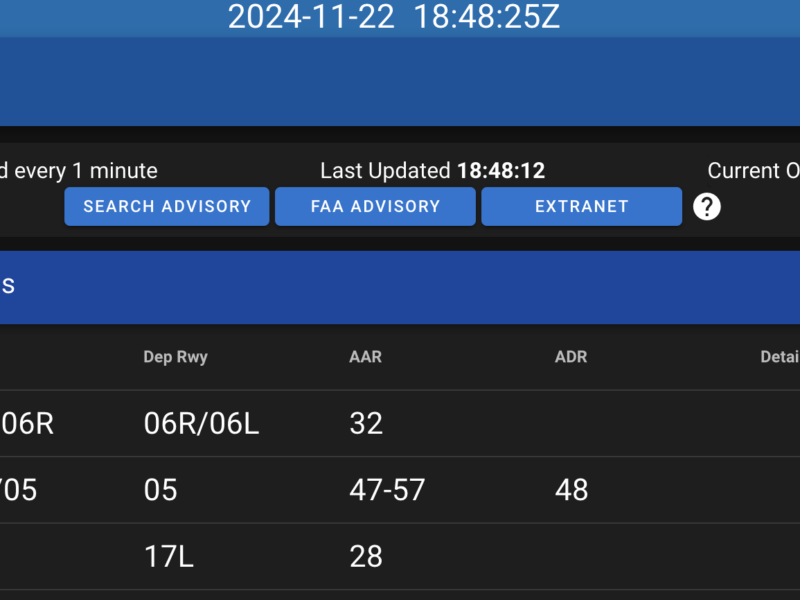My lesson the other day was delayed because the runway friction index at Buttonville was .27. The minima for instructors is .30.
The Canadian Runway Friction Index (CRFI) is a way of measuring how slippery the runway is due to surface contamination. The scale runs from 0.1 to 1.0. The easier it is to stop on the runway, the higher the CRFI number.
The number is derived by using a decelerometer’s in a vehicle that zooms down the runway slamming on its breaks every 1000′ or so. The car is usually right on the centerline (or close to) and averages out all the values all along the runway. Along with a CRFI number the runway condition is also noted in the NOTAM:
000000 CYKZ TORONTO/BUTTONVILLE MUNICIPAL
CYKZ RSC 15/33 80 PERCENT BARE AND DRY 10 PERCENT COMPACTED SN
10 PERCENT ICE PATCHES 0701181130
CYKZ RSC 03/21 50 PERCENT BARE AND DRY 20 PERCENT COMPACTED SN
30 PERCENT ICE PATHCES 0701181130
CYKZ CRFI 03/21 -4 .32 0701181130
Here the CRFI is given for the active runway, 03/21. The index is .32 and the temperature is -4°C. You can read the Runway Surface Condition report just above. So why is the CRFI so important? It all has to do with crosswinds!
Imagine you’re attempting to land at an airport with a really slippery runway. The crosswind component 70° at 15KT. A Cessna might start sliding across the runway as the crosswind pushes you as you roll out.
Here are some example CFRI numbers and possible runway conditions:
0.07 – 0.22: Bare Ice
0.19 – 0.35: Sanded Ice
0.16 – 0.76: 3mm of loose snow on pavement
More information about the CFRI can be found in the AIM: AIR 1.6.
Taxiing out to the runway was a challenge as the taxiway was snow covered and you couldn’t see any of the lines painted on the pavement. The way that the plows plow the taxiways is such that there is a little pile of snow right on the centre line. You should always keep this pile of snow to your left.
Regardless, I still got stuck in the snow on the way back to the tie down area. Had to hop out of the plane and push ‘er in.

